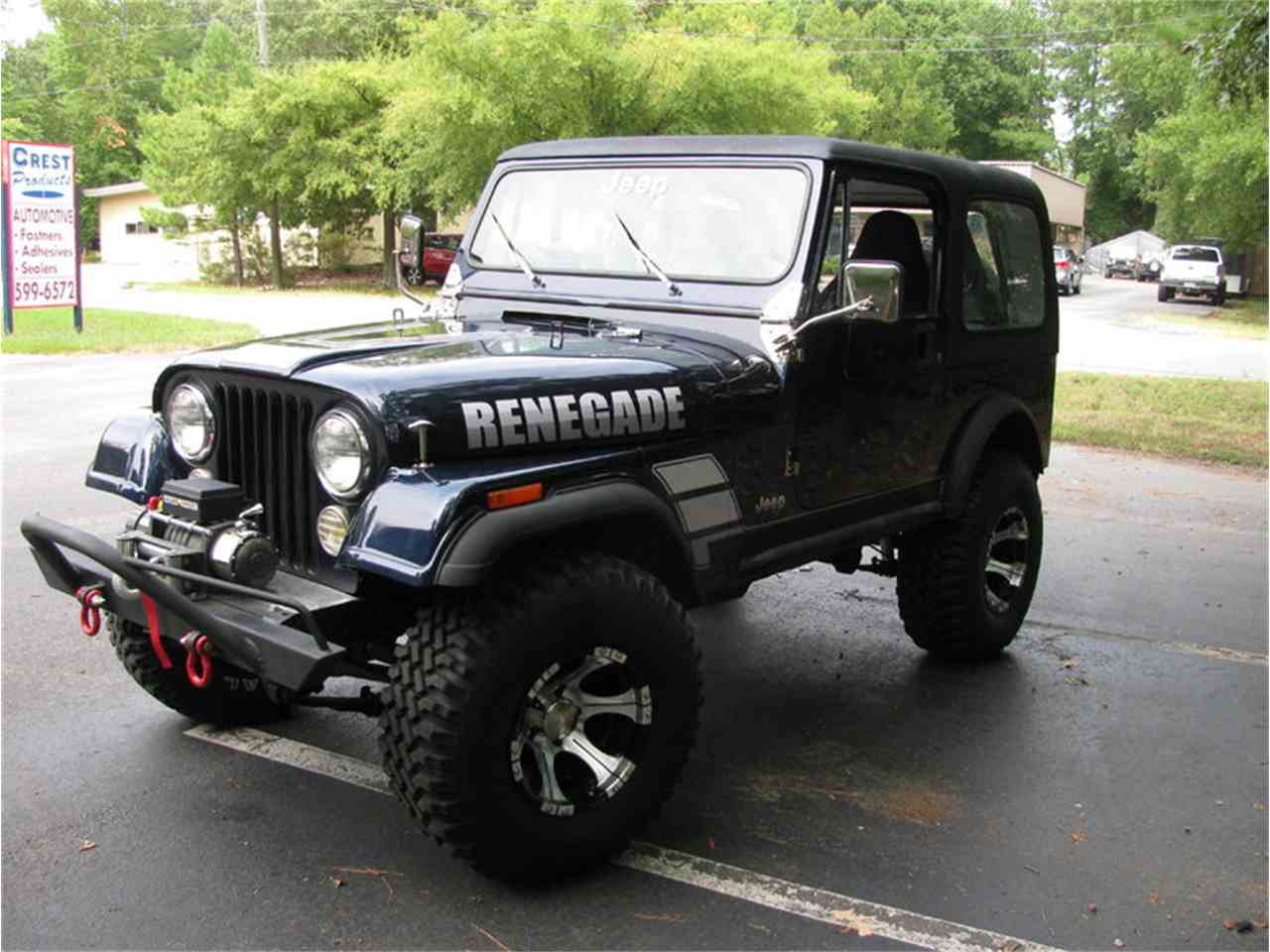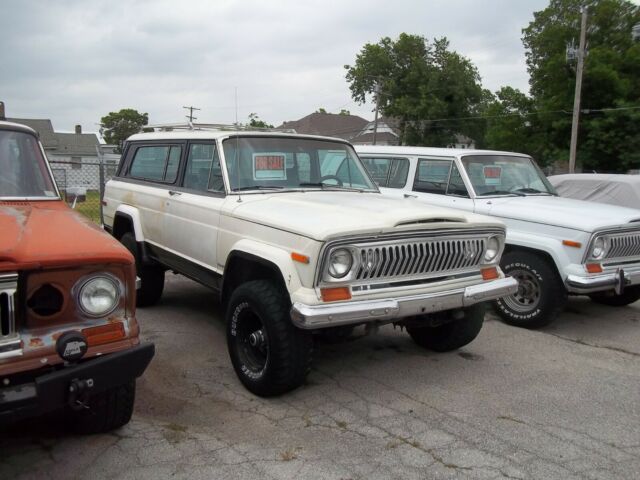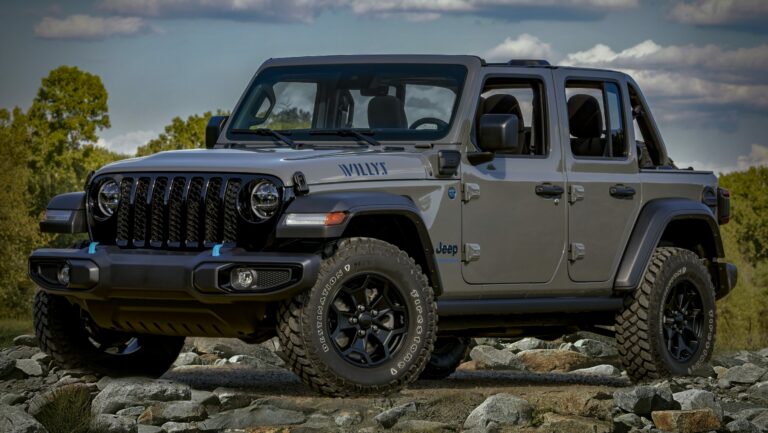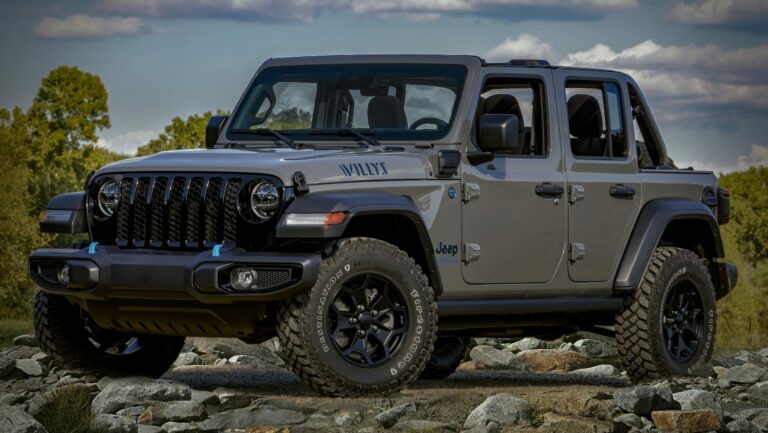76 Jeep CJ7 For Sale: Your Ultimate Guide to Finding and Owning an American Icon
76 Jeep CJ7 For Sale: Your Ultimate Guide to Finding and Owning an American Icon jeeps.truckstrend.com
The year 1976 marked a significant turning point in the storied history of the Jeep CJ series, ushering in the beloved CJ7. More than just a utility vehicle, the 1976 Jeep CJ7 represents a rugged American icon, a symbol of freedom, adventure, and unparalleled off-road capability. For enthusiasts and collectors alike, the prospect of a "76 Jeep CJ7 For Sale" isn’t just about acquiring a vehicle; it’s about owning a piece of automotive history, a blank canvas for customization, and a ticket to an enduring legacy of exploration. This comprehensive guide will navigate you through everything you need to know when considering adding this legendary 4×4 to your garage.
Why the 1976 Jeep CJ7 Stands Out: A Legacy Forged in Steel
76 Jeep CJ7 For Sale: Your Ultimate Guide to Finding and Owning an American Icon
The 1976 CJ7 wasn’t merely an updated CJ5; it was a strategically re-engineered model designed to offer more comfort and stability while retaining the CJ’s legendary off-road prowess. Its most notable distinguishing feature was a 10-inch longer wheelbase than the CJ5, primarily to accommodate an automatic transmission, which was becoming increasingly popular. This longer wheelbase also contributed to a smoother ride and enhanced stability on and off the pavement, making it a more versatile vehicle for daily driving and extended adventures.
Under the hood, the 1976 CJ7 offered a range of robust AMC engines: the thrifty 232 cubic inch (3.8L) inline-six, the more powerful 258 cubic inch (4.2L) inline-six, and the potent 304 cubic inch (5.0L) V8. These engines, coupled with sturdy manual transmissions (like the T-150, T-18, or the later T-176) or the reliable TH400 automatic, and the bulletproof Dana 20 or Dana 300 transfer cases, solidified the CJ7’s reputation for durability and performance.
Beyond its mechanical fortitude, the 1976 CJ7 boasts that unmistakable classic Jeep aesthetic: removable doors, a fold-down windshield, exposed hinges, and a design that screams "adventure." This timeless appeal, combined with its simple, easy-to-work-on mechanicals and a vast aftermarket support, makes the ’76 CJ7 an enduring favorite among classic vehicle enthusiasts and off-roaders.
What to Look For When Buying a 1976 CJ7: A Buyer’s Checklist
Acquiring a vintage vehicle like the ’76 CJ7 requires a keen eye and a thorough inspection. Here’s a detailed breakdown of critical areas to examine:
1. The Rust Monster: Your Primary Adversary
Rust is the archenemy of any vintage Jeep. It’s not just cosmetic; it can compromise structural integrity.
- Frame: Inspect the frame rails meticulously, especially near the spring hangers, transmission cross member, and steering box. Look for patches, excessive pitting, or obvious signs of severe rust.
- Body Tub: The floorboards, especially under the pedals and seats, and the rear cargo area, are highly susceptible. Check the front fenders, rocker panels, and around the cowl. Many CJ7s have had replacement body tubs due to rust.
- Outriggers and Body Mounts: These connect the body to the frame and are common rust-out points.
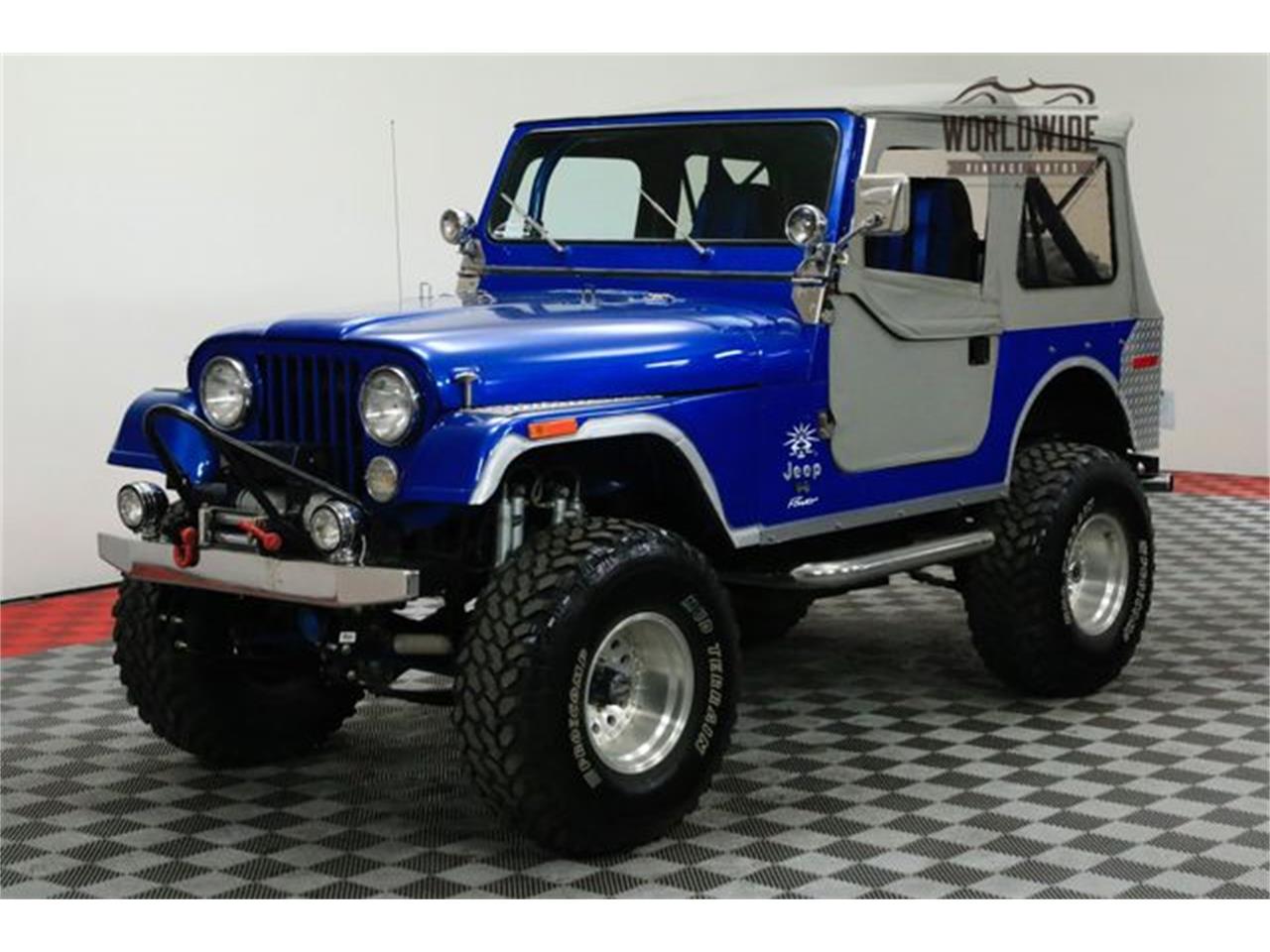
2. Engine and Drivetrain Health
Listen, look, and feel for signs of trouble.
- Engine: Check for excessive smoke (blue for oil, white for coolant), strange noises (knocks, taps), oil leaks, and proper idling. A compression test is highly recommended. Ensure all fluids (oil, coolant, power steering, brake) are at proper levels and look clean.
- Transmission: For manuals, check for smooth shifting and listen for grinding. For automatics, ensure smooth engagement and no slipping.
- Transfer Case: Engage 4WD (high and low range) to ensure it shifts smoothly and there are no binding issues or loud noises.
- Axles: Check for leaks around the differential covers and axle seals. Listen for humming or clunking noises during a test drive, which could indicate worn gears or bearings. The AMC 20 rear axle is known for weak two-piece axle shafts; inquire if it’s been upgraded to one-piece shafts.
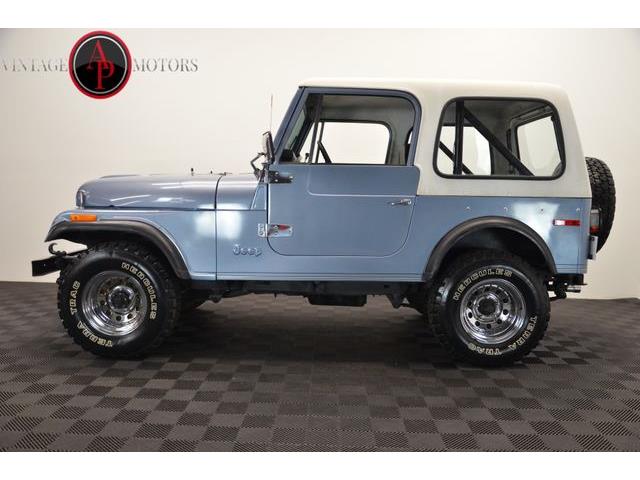
3. Suspension and Steering
These are crucial for ride quality and safety.
- Leaf Springs and Shackles: Look for sagging, broken leaves, or worn bushings.
- Shocks: Check for leaks or signs of being bottomed out.
- Steering: Excessive play in the steering wheel, wandering on the road, or clunking noises indicate worn tie rod ends, drag link, steering box, or kingpins.
4. Brakes and Electrical
- Brakes: Test for firm pedal feel, straight stopping, and no grinding or squealing. Many ’76 CJ7s have front disc brakes (standard on some models, optional on others); ensure they are functioning correctly.
- Electrical: Test all lights (headlights, tail lights, turn signals, brake lights), gauges, and accessories (wipers, heater fan). Look for frayed wires or amateur wiring jobs.
5. Interior and Exterior
- Interior: Inspect the seats for tears, the dashboard for cracks, and the floor for any signs of water intrusion or severe rust.
- Exterior: Assess the paint condition, look for dents, dings, and any signs of body filler. Check the condition of the soft top or hard top, if present.
6. Documentation
Always verify the VIN on the vehicle matches the title. Ask for service records, receipts for parts, and any history the current owner can provide.
Pricing Your 1976 Jeep CJ7: Understanding Value
The price of a 1976 Jeep CJ7 can vary wildly, from a few thousand dollars for a project vehicle to well over $30,000 for a meticulously restored or heavily modified example. Here are the key factors influencing its value:
- Condition: This is the most significant determinant.
- Project Vehicle: Minimal running gear, significant rust, non-running. ($3,000 – $8,000)
- Driver Quality: Runs and drives, but needs work, some rust, average paint. ($8,000 – $15,000)
- Good Condition/Restored Driver: Solid frame, minimal rust, good paint, reliable mechanically. ($15,000 – $25,000)
- Show Quality/Concours: Frame-off restoration, perfect condition, often original or period-correct. ($25,000 – $40,000+)
- Originality vs. Modification: Highly original, well-preserved examples can command a premium, but well-executed, tasteful modifications (engine swaps, axle upgrades, lift kits) can also increase value for the right buyer.
- Engine Type: V8 models generally fetch higher prices than inline-six versions, though a well-maintained 258 I6 is highly desirable for its reliability.
- Location: Market demand and availability can vary by region.
- Seller Type: Private sellers often offer better deals than dealerships specializing in classics.
The Joys and Challenges of Owning a 1976 CJ7
Owning a ’76 CJ7 is an experience unlike any other, but it comes with its unique set of joys and challenges.
Joys:
- Iconic Status: You’re driving a piece of American history that turns heads everywhere.
- Off-Road Prowess: Few vehicles match the CJ7’s legendary capability in the dirt.
- Simplicity: Easy to work on, making it a great vehicle for DIY enthusiasts.
- Community: A massive, supportive community of CJ owners and enthusiasts.
- Customization: Endless possibilities for modification and personalization.
- Investment: Well-maintained CJ7s tend to hold or even increase in value.
Challenges:
- Maintenance: It’s an old vehicle; things will break, and preventative maintenance is key.
- Rust: Ongoing vigilance is required to prevent and manage rust.
- Fuel Economy: Don’t expect modern MPG figures; these are thirsty beasts.
- Safety: Lacks modern safety features (airbags, ABS, crumple zones).
- Ride Quality: A true utility vehicle, it rides rougher than modern SUVs.
- Parts Availability: While aftermarket is strong, some OEM parts are scarce.
Tips for a Successful Purchase
- Do Your Homework: Research common issues, typical prices, and reputable sellers.
- Set a Realistic Budget: Include not just the purchase price, but also potential repair, restoration, and insurance costs.
- Get a Pre-Purchase Inspection (PPI): If you’re not an expert, hire a reputable mechanic specializing in vintage 4x4s to inspect the vehicle.
- Test Drive Extensively: Drive it on various surfaces if possible (street, highway, light off-road). Listen for unusual noises, feel for vibrations, and check steering and braking.
- Don’t Rush: The right CJ7 will come along. Be patient and don’t settle for a problematic vehicle out of desperation.
- Join the Community: Online forums (e.g., JeepForum, CJ-8.com, dedicated Facebook groups) are invaluable resources for advice, parts, and connections.
1976 Jeep CJ7 For Sale: Estimated Price Guide
Please note that these are estimates and actual prices can vary based on specific engine/transmission, geographical location, and current market demand.
| Condition Category | Description | Estimated Price Range (USD) | Key Characteristics |
|---|---|---|---|
| Project Vehicle | Non-running or barely running. Significant rust throughout frame and body. Missing parts. Requires extensive mechanical and body work. Suitable for experienced restorers or those seeking a complete rebuild. | $3,000 – $8,000 | Heavy rust, non-operational engine/transmission, potentially incomplete, major structural repairs needed, no current inspection/registration. |
| Driver Quality | Runs and drives. May have moderate rust on body/frame. Paint is faded or chipped. Interior shows wear. Needs various mechanical repairs (e.g., brakes, suspension work, electrical fixes) but can be driven. | $8,000 – $15,000 | Visible rust (surface to moderate perforation), worn interior, average paint, may have minor mechanical issues, likely needs general maintenance and some repairs to be reliable. |
| Good Condition / Restored Driver | Solid frame with minimal to no rust. Body tub may be original with minor patches or a quality replacement. Good paint job. Mechanically sound and reliable. May have tasteful upgrades. Ready to drive and enjoy. | $15,000 – $25,000 | Solid frame (minimal/no rust), good quality repaint, clean interior (new seats/dash), well-maintained engine/drivetrain, all systems functional, reliable for regular driving, minor cosmetic flaws may be present. |
| Show Quality / Concours | Meticulously restored to original specifications or to a very high standard. Frame-off restoration. No rust. Flawless paint and interior. Every component either new, rebuilt, or perfectly restored. Often trailered to shows. | $25,000 – $40,000+ | Flawless paint, rust-free body and frame, perfectly restored/new interior, rebuilt engine/drivetrain to factory specs or high-performance, period-correct details, often comes with extensive documentation of restoration, typically driven minimally to preserve condition. |
Frequently Asked Questions (FAQ) about the 1976 Jeep CJ7
Q1: Is a 1976 CJ7 a good daily driver?
A1: While it’s possible, a 1976 CJ7 is generally not ideal as a daily driver by modern standards. It lacks modern safety features, has a rougher ride, poorer fuel economy, and requires more frequent maintenance than a contemporary vehicle. However, for enthusiasts who appreciate the classic experience, it can be a joyful occasional driver.
Q2: What are the common engine options for the ’76 CJ7?
A2: The primary engine options were the AMC 232 cu. in. (3.8L) I6, the AMC 258 cu. in. (4.2L) I6, and the AMC 304 cu. in. (5.0L) V8. The 258 I6 is highly regarded for its reliability and torque.
Q3: Are parts still available for a 1976 CJ7?
A3: Yes, largely thanks to a robust aftermarket. Many companies specialize in reproduction parts for CJ7s, including body tubs, frame sections, mechanical components, and cosmetic items. Finding original OEM parts can be more challenging but not impossible.
Q4: How much rust is too much when buying a CJ7?
A4: Any rust on the frame is a serious concern. Surface rust is manageable, but significant pitting, holes, or previous patch jobs on the frame rails are red flags. For the body, moderate surface rust is common, but large perforations in structural areas (floorboards, body mounts) indicate extensive work will be needed. It largely depends on your budget and skill level for repairs.
Q5: What should I budget for repairs or restoration after purchase?
A5: This varies wildly. For a "driver quality" vehicle, budget anywhere from $2,000 to $10,000 for immediate repairs and upgrades to make it reliable and safe. A full frame-off restoration can easily cost $20,000 to $50,000 or more, depending on whether you do the work yourself or pay professionals.
Q6: Is the 1976 CJ7 safe for highway driving?
A6: The ’76 CJ7 lacks modern safety features like airbags, ABS, and stability control. Its short wheelbase and high center of gravity (especially with lift kits) make it less stable at high speeds compared to modern vehicles. Always drive defensively and be aware of its limitations. Ensure the steering and braking systems are in excellent condition.
Q7: Can I modify a 1976 CJ7 for extreme off-roading?
A7: Absolutely! The CJ7 is a favorite platform for extreme off-road modifications. Its solid axle design and abundant aftermarket support allow for extensive upgrades including lift kits, larger tires, heavy-duty axles, engine swaps, and roll cages.
Conclusion
The pursuit of a "76 Jeep CJ7 For Sale" is an exciting journey into the heart of American automotive heritage. This iconic 4×4 offers a unique blend of rugged capability, timeless style, and a vibrant community. By understanding what to look for, setting a realistic budget, and approaching the purchase with careful consideration, you can secure a classic that promises years of adventure, customization, and the unparalleled joy of owning a true legend. Whether you envision it as a pristine showpiece, a capable trail rig, or a nostalgic weekend cruiser, the 1976 Jeep CJ7 remains an enduring symbol of freedom, ready for its next chapter with you behind the wheel.
